[ART HISTORY] J. M. W. Turner - Part 1 - The Young Turner 🎨
Childhood and The First Watercolors
Joseph Mallord William Turner - often simply referred to as William Turner - was born April 23, 1775 in the heart of London. His father was a barber and owned and operated a barber shop in one of London's most lively, artistic and commercial centers, Covent Garden. He therefore had plenty of customers and lived a most affluent and comfortable life until his death. Artists, actors, musicians, businessmen and bankers were among those who regularly allowed themselves to be shaved and styled by him.
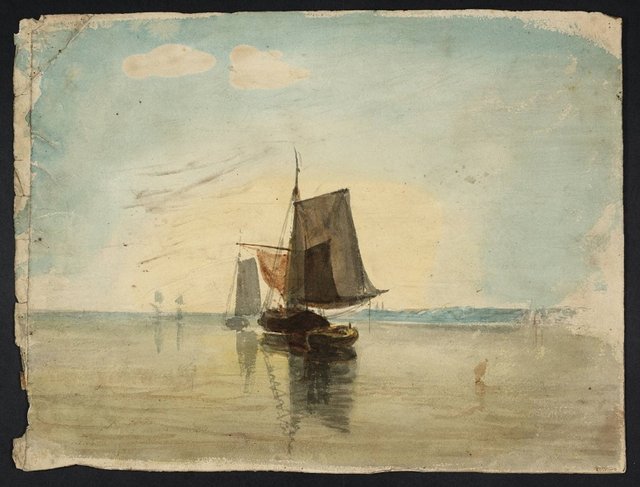
In a material sense, William Turner thus had a secure childhood, but his mother suffered from severe depressions which gradually slipped into psychosis. In 1785, when William was ten years old, she was in such a bad condition that William had to be taken care of by an uncle who lived in Brentford, Middlesex. A younger sister had died at a young age. It was during his time at the uncle that the young William's notable artistic talents clearly made themselves known, and he began to draw and paint. And the father, was throughout his life one of William's staunchest and most loyal patrons and wholeheartedly supported his son's ambitions to pursue art. The father's barber shop in Covent Garden became William's first art gallery, where his father proudly exhibited the first creations of his eleven-year old son: drawings and a few watercolors. One of these were most likely "A Street in Margate, looking down to the Harbour", painted in 1786.
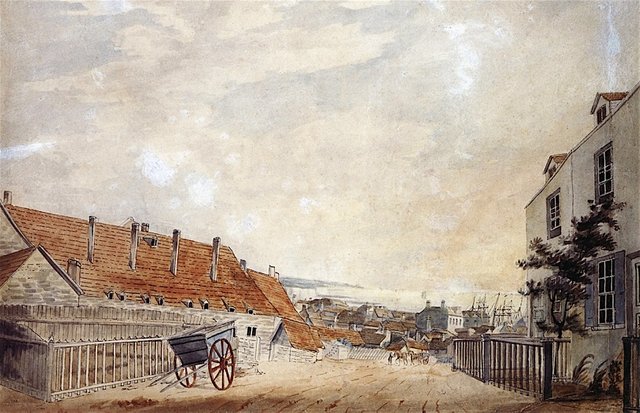
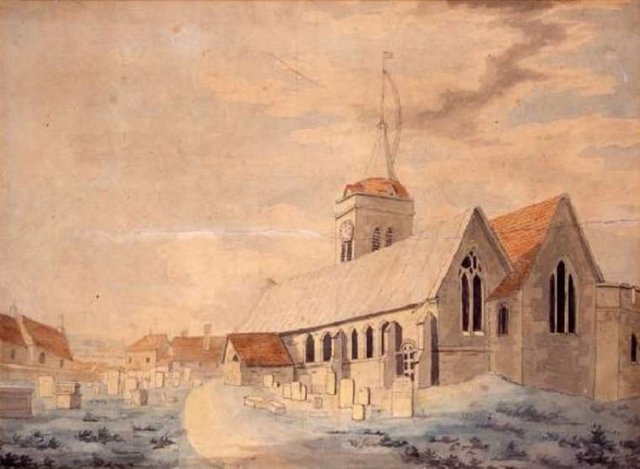
The Early Academy Years
It was primarily as a landscape painter that Turner would become known - and we're talking about landscape in a broad sense: nature, environments, rural and urban, events, legends, stories, myths and reality. And as a landscape painter, he was truly born in the right country. On the European continent the pure landscape paintings weren't as highly valued around this time. In Britain the purely topographical landscape painting that depicted the features with great detail and accuracy, was on the other hand highly appreciated. In this respect Turner got a solid classical training, a foundation, which would eventually give him the opportunity to break away and find his very own way to new forms of expression. He made several thousands of sketches and watercolors in the late 1780s and throughout the 1790s. Studying his sketchbooks from this period is a humbling experience as a fellow artist.
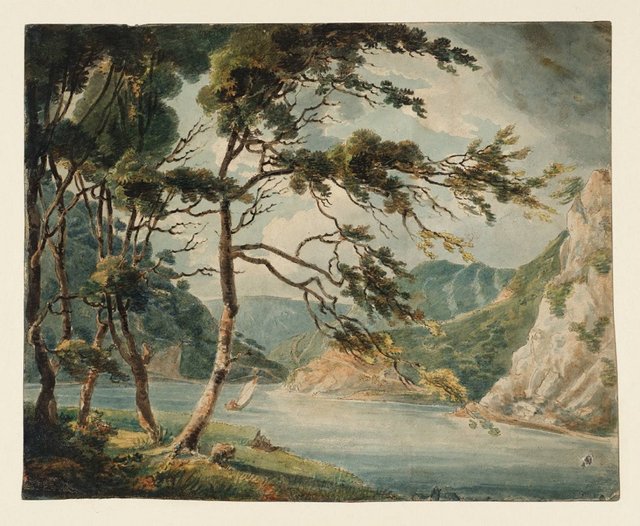
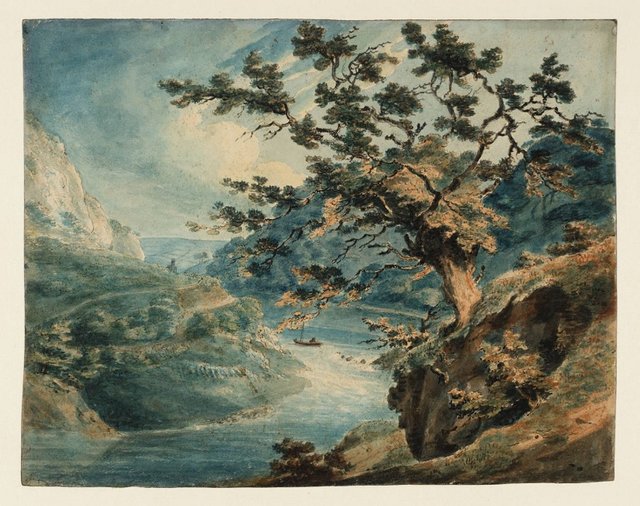
As early as September 11, 1789, at the age of fourteen, William Turner was admitted at the Royal Academy of Arts in London. The entrance exam was to draw a number of plaster casts of ancient sculptures. But despite the rather conventional and conservative admission procedure, the British Academy was in many respects far more modern than its counterpart in Paris. Unlike the Academy in Paris the organization of Royal Academy wasn't nearly as hierarchical, and in London even female students were admitted, unlike in the Paris Academy where it would take another 100 years before women were able to apply.
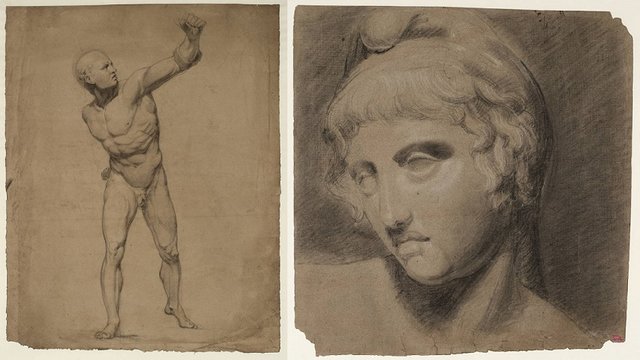
Turner's education, as well as his subsequent artistic career, is a quite unusual success story. At no stage of his career he had problems with his livelihood, and very soon he could even begin to build up a considerable fortune. He indeed had a number of patrons, but their support was more of a moral, intellectual and artistic kind, than a financial. They rather acted as Turner's sidekicks in the arts trade and art debate.
The first of these patrons was a doctor and psychiatrist named Thomas Monroe. He was an avid art collector and himself a decent amateur painter. Gathering young art students in his home, where they would copy the works of the famous Dutch, Flemish and Italian masters, belonged to his great joys. The payment consisted in a fixed price for each copy and an oyster dinner in front of the finished paintings in the evening. Turner was one of the students that participated in these events. Turner had many sources of inspiration within the art scene of his own country. One of the very first were John Robert Cozens (see the painting below), who's landscapes from the Alps and Italy made a big impression on him.
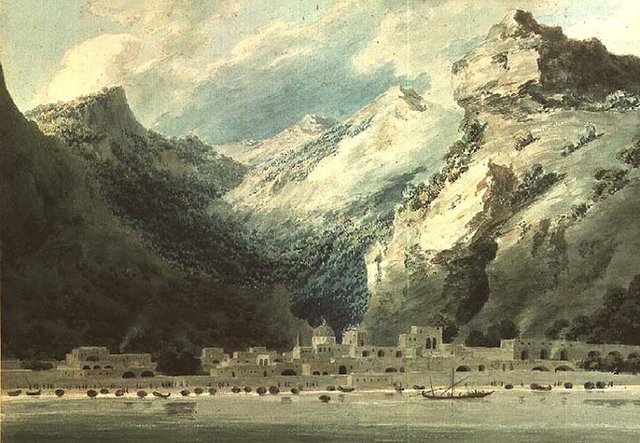
The medium that would be Turner's key to success was the watercolor. Also in that respect, he was born in the right country. Watercolor painting had a much stronger position in Britain than in continental Europe. In Britain, the watercolor at this time had long been an art form in its own right; on the European continent the watercolor tended to be regarded as a kind of preliminary stage on the way to a finished oil painting. And sure, this was the case for Turner as well; the watercolors sharpened his eye for the motive and gradually led him to his new and unique expression that seriously blossomed in his paintings from the 1830s and onward; experiments with light and color that led some critics of our time to call him a proto-Impressionist. But more on those revolutionizing paintings in the next article.
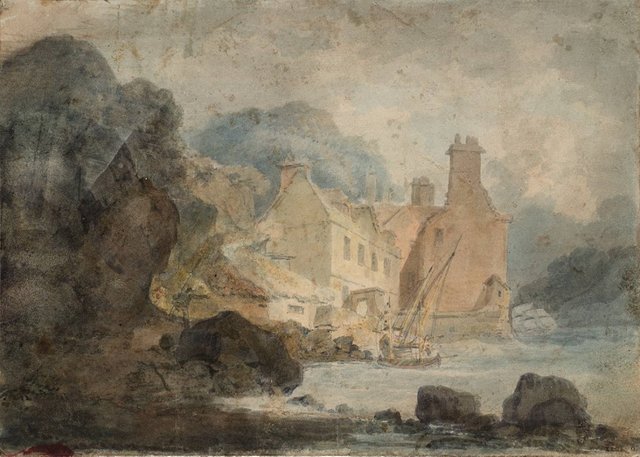
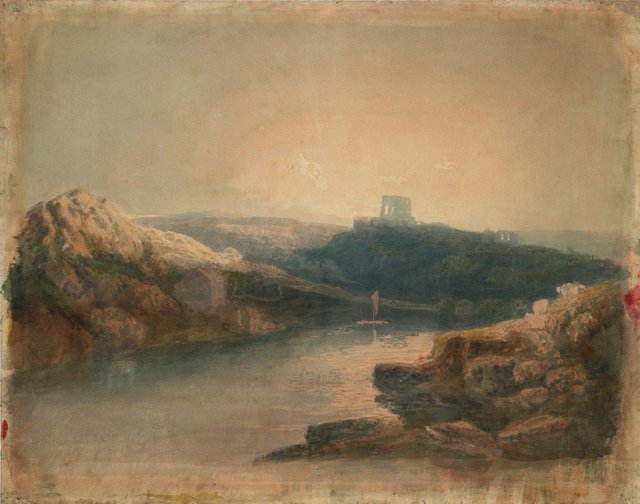
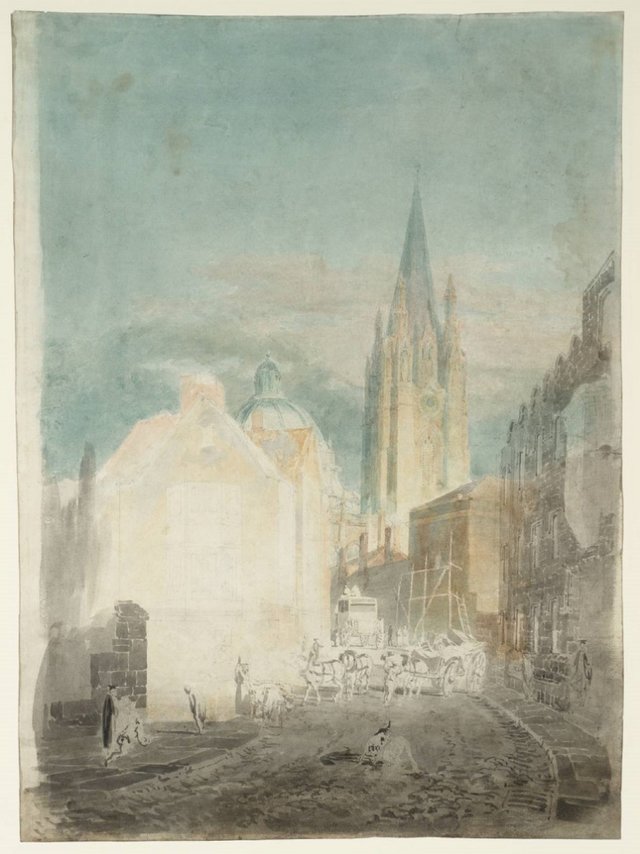
When Turner started to paint seriously, the watercolor medium had undergone technical innovation. Until the 1780s, the artists had been forced to make their own paint, both oil paints watercolors - a complicated and time-consuming craft. The industrially produced watercolors now began to be sold, but it was only in 1832 that water colors in small and compact cubes were introduced on the market. Another "novelty" was that from this time artists more consistently started to paint watercolors on white paper. Several of Turner's earlier watercolors were painted on colored paper, often with a blue tint.
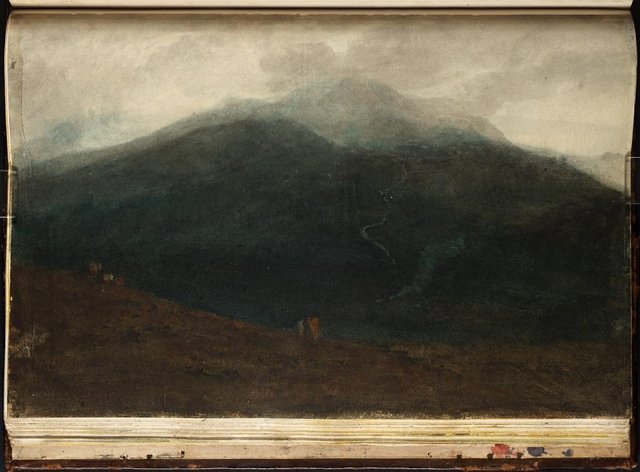
Turner showed his first watercolor paintings at exhibitions in the Academy, and he had great success. But the competition was also fierce. There were several other talented English watercolor painters at that time, and Turner soon realized that he had to broaden his artistic perspective, which is why he started to paint in oil.
In 1796, at an age of 21, he presented his first oil painting, "Fishermen at Sea", at the Academy. This painting was one in a series of marine subjects that he painted in the late 1790s. The image composition in these paintings is often very dramatic and full of tension and contrasts, and they rather express a romantic idea and feeling for the primal forces of nature, rather than being realistic depictions.
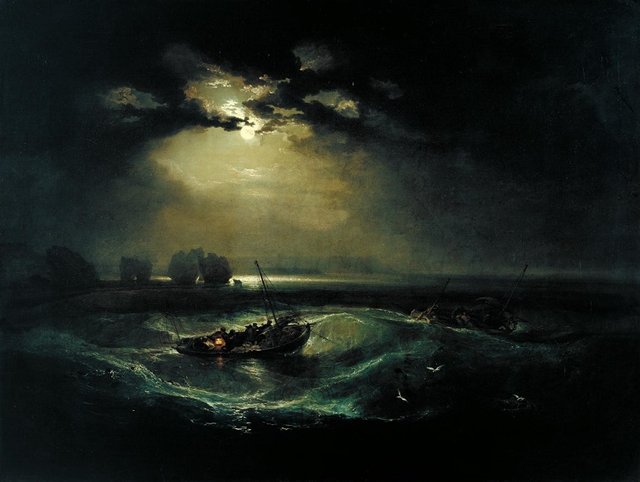
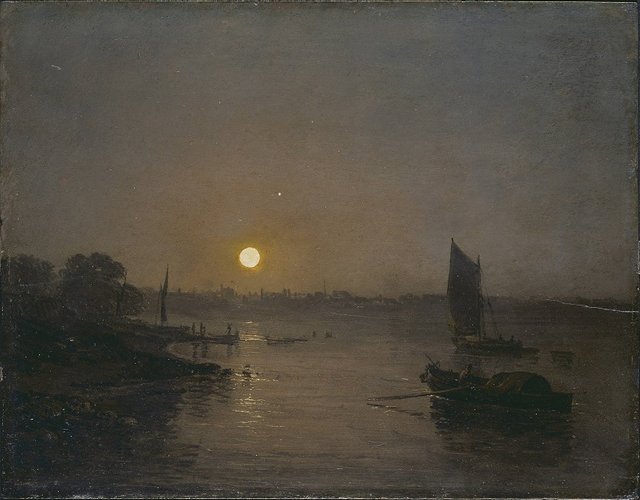
Turner's rapid and early successes can not help but surprise and impress. On November 4, 1799, at the mere age of 23, he was appointed associate member of the Royal Academy. On February 12, 1802, at the age of 27, he became a permanent member of the Academy.
We get a certain measure of Turner's success by looking at how quickly the prices of his paintings rose. Turner's first oil painting, "Fishermen at Sea", was bought in 1796 by a General for 10 pounds. Two years later, in 1798, two oil paintings with motifs from Plompton Rocks were sold for 32 pounds. In 1802 his painting "Dutch Boats in a Gale" were sold for 300 pounds. In 1851, shortly before his death, he sold two paintings for 2500 pounds, a minor fortune at the time.
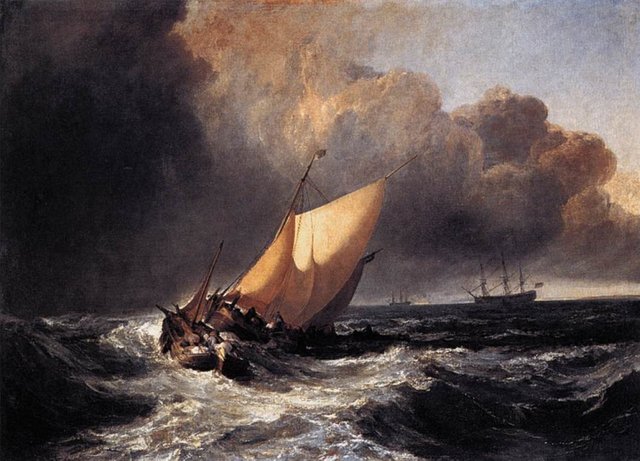
The Sublime
Something also has to be said about the ideas that guided Turner in his artistry. For Turner there were no sharp boundary lines between the arts, for him there was a strong relationship between the visual arts and literature and poetry. In his exhibition catalog, the different works were often illustrated by a poem, sometimes from classical literature, but also poems that Turner had written. Also philosophy belonged to Turner's many sources of inspiration. Above all Turner embraced one of great the philosophers of Romanticism in England, Edmund Burke. He argued that an idyllic and idealized harmonious representation of nature is false and misleading. Man is on the contrary filled with fear and trepidation before nature's unpredictable, violent and relentless forces, and with wonder before the infinite and incalculable. This is what Burke called the sublime, and I dare to say that it's precisely this quality that runs like an undercurrent through Turner's entire artistry.
 @SteemSwede
@SteemSwede
Sources:
Moyle, Franny (2016) Turner: The Extraordinary Life and Momentous Times of J. M. W. Turner. Viking Press.
Meslay, Olivier (2005) Turner: Life and Landscape. Abrams Books.
Bockemühl, Michael (2006) J. M. W. Turner, 1775–1851: the world of light and colour. Taschen.
This post has been ranked within the top 50 most undervalued posts in the second half of Dec 19. We estimate that this post is undervalued by $5.86 as compared to a scenario in which every voter had an equal say.
See the full rankings and details in The Daily Tribune: Dec 19 - Part II. You can also read about some of our methodology, data analysis and technical details in our initial post.
If you are the author and would prefer not to receive these comments, simply reply "Stop" to this comment.
Great piece Steemswede :-) .. you are certainly a knowledgeable art historian. I have also had a particular fondness of the mature Turner, and as you say, his influence of all arts and even industry, may be a reason why he developed his particular style (my guess). I once saw the Turner collection at Tate gallery in London, but it is 20 years ago :-)
Yes of course the mature Turner is the most striking, but it should be said that this freer expression is foreshadowed in many of his watercolors long before the 1830's. It's immensely fascinating to go through his sketchbooks here: http://www.tate.org.uk/art/research-publications/jmw-turner/1787-1801-student-and-master-r1130129
I will post my article on the late Turner this evening :)
Some call him the first real impressionist, while one could even point to El Greco i 16-17 century. But as you indicate, it is always interesting to go back and see how things develop and early stages can often be more satisfying in its simplicity or naivety. That often goes for rock groups :-) The hungry years are the best years :-)
Thank you for posting @steamswede. This is well composed...thorough.....accompanied with excellent photographs of his paintings. He was a master. You are very kind to bring Mr. Turner's story and art to Steemit.
Happy Christ-mas. Cheers.
Thank you for reading, glad you enjoyed it! :)
And a merry Christmas to you too!
It's amazing! Very interesting post!
Happy to hear you found it interesting, stay tuned for the second part!
Great just great, thanks @steemswede